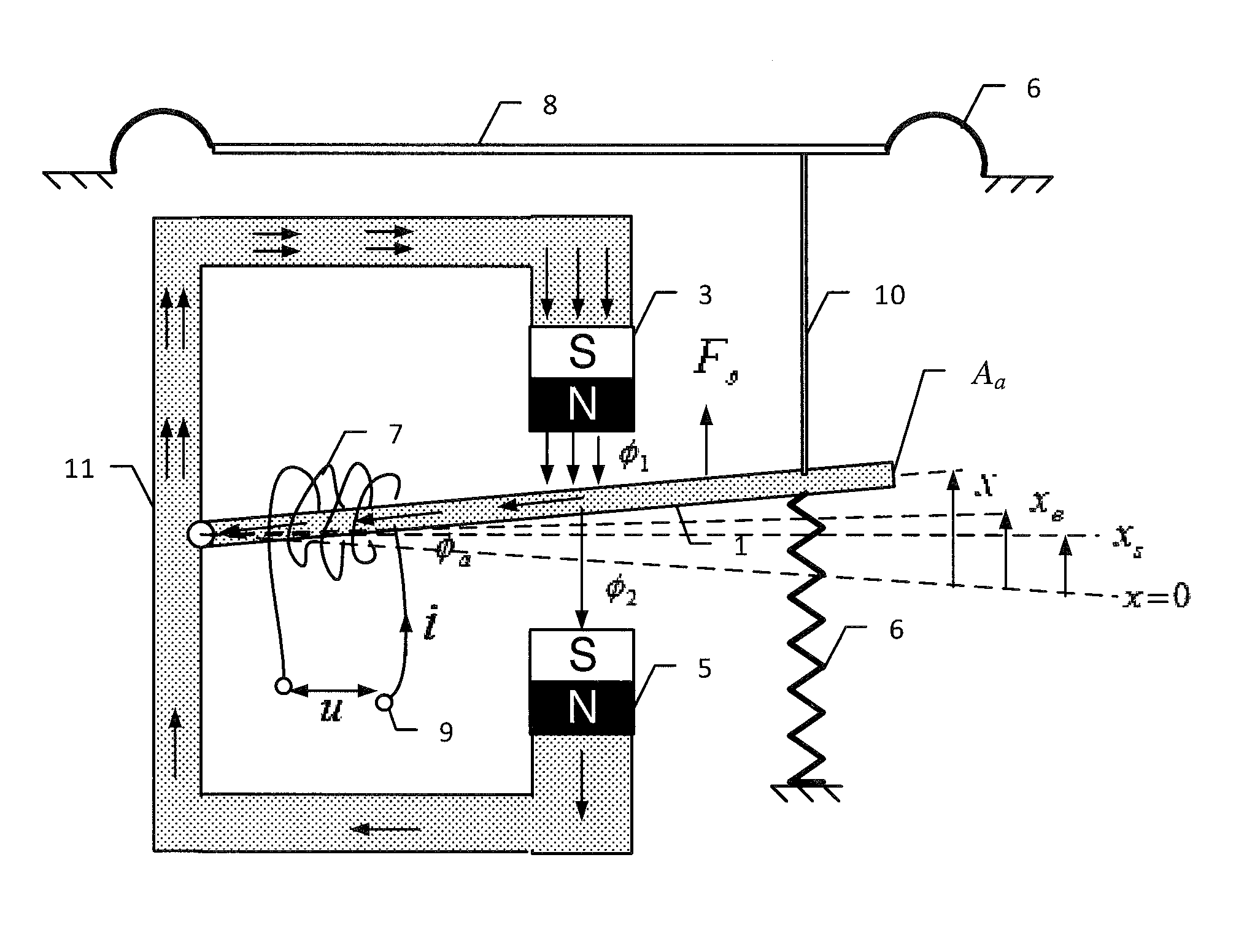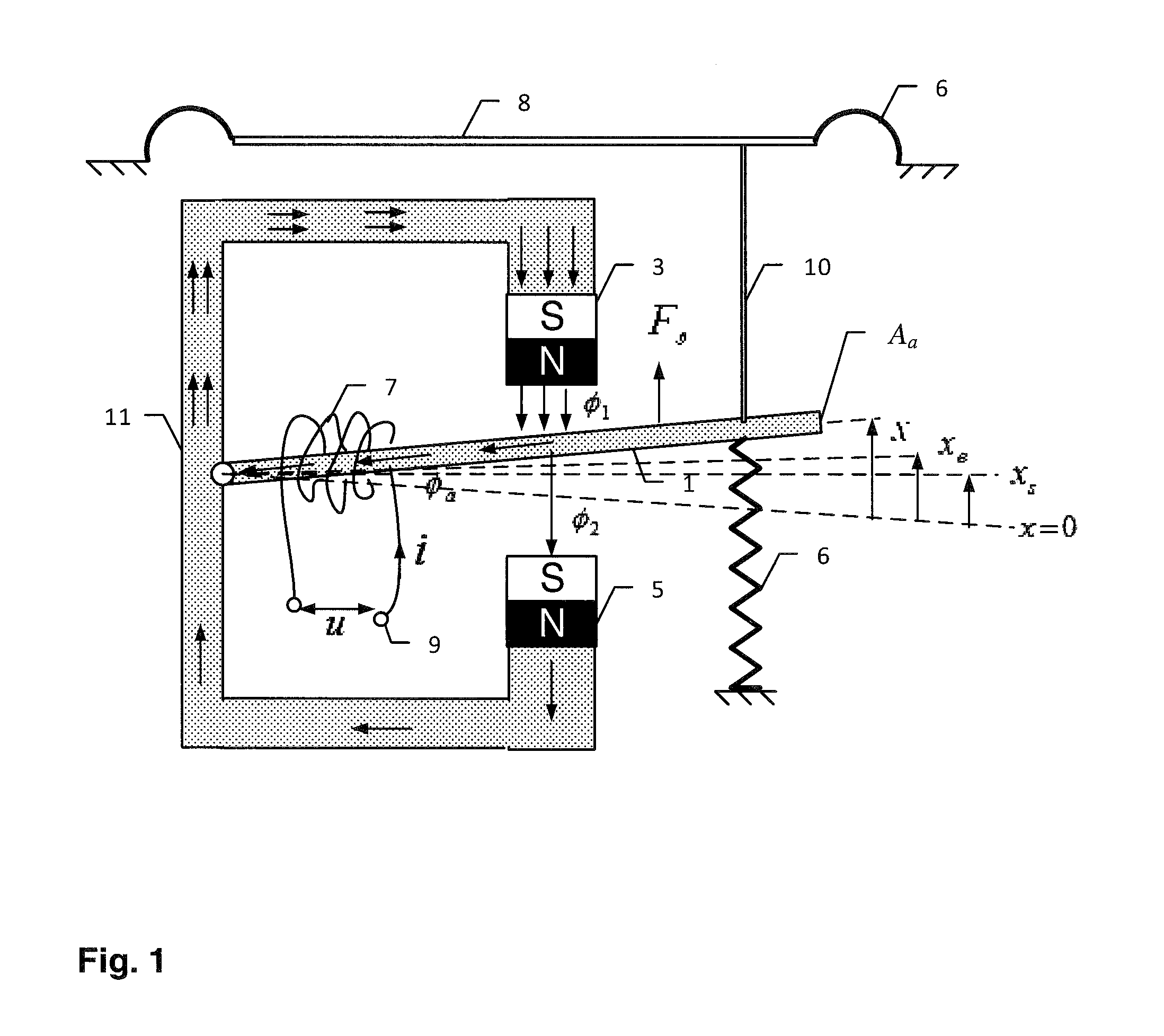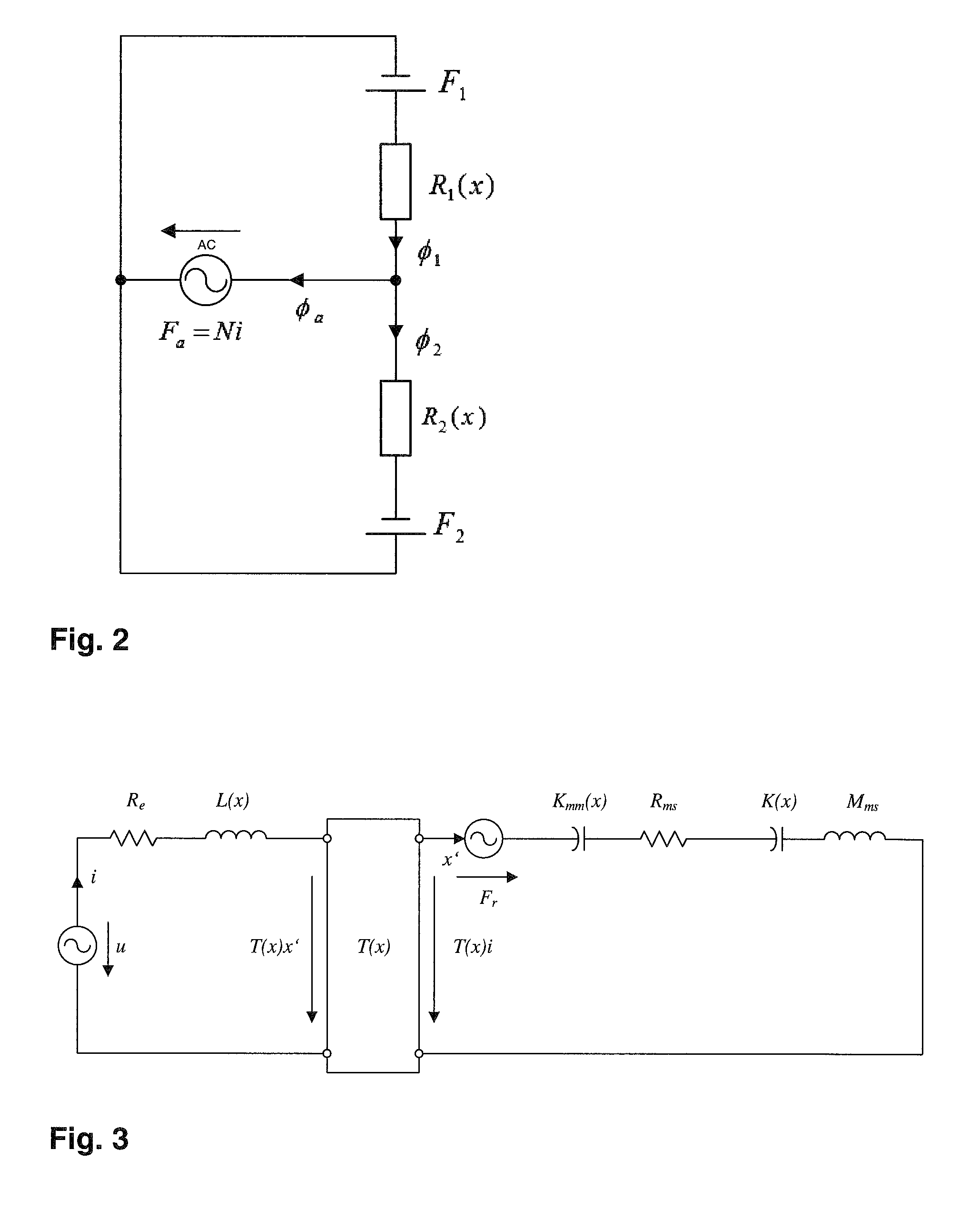Arrangement and method for converting an input signal into an output signal and for generating a predefined transfer behavior between said input signal and said output signal
a technology of input signal and output signal, which is applied in the direction of transducer circuits, electrical transducers, electrical apparatus, etc., can solve the problems of nonlinearity, harmonic distortion and other symptoms of nonlinearity, measurement does not give a complete description of nonlinearity transfer behavior, and the nonlinearity inherent in the electro-magnetic principle is a source of signal distortion, etc., to achieve a feed-forward structure which is always stable, avoids any feedback
- Summary
- Abstract
- Description
- Claims
- Application Information
AI Technical Summary
Benefits of technology
Problems solved by technology
Method used
Image
Examples
Embodiment Construction
[0029]The derivation of the theory is illustrated by the example of the balanced-armature device as shown in FIG. 1 but may be applied to other types of the electro-magnetic transducer in a similar way. The armature 1 is placed in the air gap between the magnets 3 and 5 which are part of a magnetic circuit 11. A coil 7 placed at a fixed position generates a magneto-motive force Ni, depending on the number N of wire turns and input current i at the terminals 9. The mechanical suspension 6 determines the rest position of the armature and the driving rod 10 is connected to the diaphragm 8.
[0030]The model, as disclosed by F. V. Hunt in the above mentioned prior art, is based on the assumptions that the magnets 3 and 5 have the same magneto-motive force
Fm=F1=F2 (1)
and the magnetic reluctances R1(x) and R2(x) of the air in the upper and lower gap are much larger than any other reluctance in the iron path giving the simplified magnetic circuit in FIG. 2. Then the magnet fluxes φ1 and φ2 i...
PUM
 Login to View More
Login to View More Abstract
Description
Claims
Application Information
 Login to View More
Login to View More - R&D
- Intellectual Property
- Life Sciences
- Materials
- Tech Scout
- Unparalleled Data Quality
- Higher Quality Content
- 60% Fewer Hallucinations
Browse by: Latest US Patents, China's latest patents, Technical Efficacy Thesaurus, Application Domain, Technology Topic, Popular Technical Reports.
© 2025 PatSnap. All rights reserved.Legal|Privacy policy|Modern Slavery Act Transparency Statement|Sitemap|About US| Contact US: help@patsnap.com



